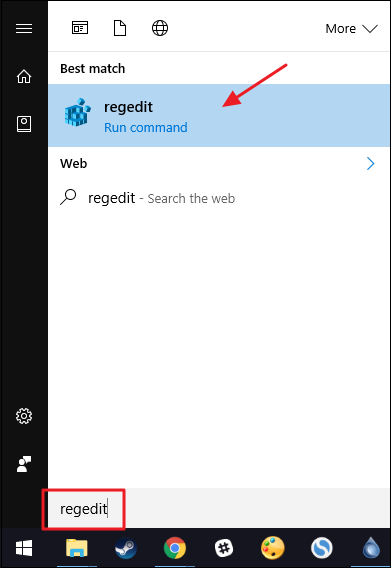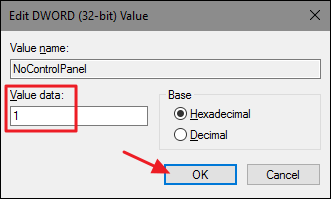The Windows Control Panel and Settings interface both expose a lot of settings that you might not want some users messing around with. Here’s how to disable them in Windows 7, 8, and 10.
Why disable the Control Panel and Settings interface? Perhaps you share a computer and want certain users not to have access to settings. Or perhaps you have a computer in your business that is available to guests and customers and that you just want to lock it down a bit. Disabling the Control Panel and Settings interface is a pretty easy way to make sure the settings on a computer don’t get changed by accident. If you have a Pro or Enterprise edition of Windows, you can use the Local Group Policy Editor to make the change. Users of any edition of Windows can also make a quick edit to the Registry.
In Windows 8 and 10, this will disable both the Control Panel and the newer Settings interface. Obviously, if you’re using Windows 7, there is no settings interface, so this will just disable the Control Panel.https://imasdk.googleapis.com/js/core/bridge3.494.0_en.html#goog_1470664740 seconds of 30 secondsVolume 0%
Home Users: Disable the Control Panel and Settings Interface by Editing the Registry
If you have Windows 7, 8, or 10 Home, you will have to edit the Windows Registry to make these changes. You can also do it this way if you have Windows Pro or Enterprise, but just feel more comfortable working in the Registry. (If you have Pro or Enterprise, though, we recommend using the easier Local Group Policy Editor, as described in the next section.)
Standard warning: Registry Editor is a powerful tool and misusing it can render your system unstable or even inoperable. This is a pretty simple hack and as long as you stick to the instructions, you shouldn’t have any problems. That said, if you’ve never worked with it before, consider reading about how to use the Registry Editor before you get started. And definitely back up the Registry (and your computer!) before making changes.
Before you get started editing the Registry, you’ll need to log on as the user you want to make changes for, and then edit the Registry while logged in to their account. If you have multiple users for whom you want to changes for, you’ll have to repeat the process for each user.ADVERTISEMENT
After logging on, open the Registry Editor by hitting Start and typing “regedit.” Press Enter to open Registry Editor and give it permission to make changes to your PC.

In the Registry Editor, use the left sidebar to navigate to the following key:
HKEY_CURRENT_USER\SOFTWARE\Microsoft\Windows\CurrentVersion\Policies\

Next, you’ll need to make sure that a subkey named Explorer exists inside the Policies key. If you already see the Explorer key, you’re good to go on to the next step. If you don’t see it, you’ll need to create one. Right-click the Policies key and choose New > Key. Name the new key Explorer .

Next, you’re going to create a value inside the new Explorer key. Right-click the Explorer key and choose New > DWORD (32-bit) Value. Name your new value NoControlPanel .

Double-click the new NoControlPanel value to open its properties window. Change the value from 0 to 1 in the “Value data” box and then click “OK.”

And that’s all you have to do. The changes should take place immediately with no need for restarting Windows. You’ll still see the Settings icon on the Start menu (in Windows 10) or Charms bar (in Windows 8) and you’ll still see the Control Panel shortcut in all versions of Windows, but clicking any of them will not work. If you try to pull up Settings, nothing will happen. If you try to open Control Panel, you’ll be greeted with an error message.

And if you ever want to restore access to the Control Panel, just log on as the affected user, open up Registry Editor, and change the NoControlPanel value from 1 back to 0.
Download Our One-Click Registry Hack

If you don’t feel like diving into the Registry yourself, we’ve created two downloadable registry hacks you can use. One hack disables access to Control Panel and Settings and the other hack enables access. Both are included in the following ZIP file. Double-click the one you want to use and click through the prompts. Just remember that you’ll need to log on with the user account you want to make the changes for first.
These hacks are really just the Explorer key, stripped down to the NoControlPanel value we described above, and then exported to a .REG file. Running the “Disable Control Panel and Settings” hack creates the Explorer key and the NoControlPanel value and sets the value to 1. Running the “Enable Control Panel and Settings (Default)” hack sets the value back to 0. And if you enjoy fiddling with the Registry, it’s worth taking the time to learn how to make your own Registry hacks.
Pro and Enterprise Users: Disable the Control Panel and Settings Interface with Local Group Policy Editor
If you’re using Windows Pro or Enterprise, the easiest way to disable the Control Panel and Settings interface is by using the Local Group Policy Editor. It also gives you a bit more power over which users have this restriction. If you’re restricting access to the Control Panel and Settings interface for only some user accounts on a PC, you’ll need to do a little extra setup by first creating a policy object for those users. You can read all about that in our guide to applying local Group Policy tweaks to specific users.
You should also be aware that group policy is a pretty powerful tool, so it’s worth taking some time to learn what it can do. Also, if you’re on a company network, do everyone a favor and check with your admin first. If your work computer is part of a domain, it’s also likely that it’s part of a domain group policy that will supersede the local group policy, anyway.
Start by finding the MSC file you created for controlling policies for those particular users. Double-click to open it and allow it to make changes to your PC. In this example, we’re using one we created for applying policy to all non-administrative user accounts.ADVERTISEMENT
https://f7135ed6ebe94175384779a08f437784.safeframe.googlesyndication.com/safeframe/1-0-38/html/container.html
In the Group Policy window for those users, on the left-hand side, drill down to User Configuration > Administrative Templates > Control Panel. On the right, find the “Prohibit access to Control Panel and PC settings” item and double-click it to open its properties dialog. If you’re running Windows 7, this item will just be named “Prohibit access to the Control Panel,” since there was no separate Settings interface in Windows 7.

In the setting’s properties window, click the “Enabled” option and then click “OK.”

You can now exit the Local Group Policy Editor. Changes should take place immediately, so there’s no need to restart Windows first. The Control Panel and Settings interface should no longer be accessible to the user. To reverse the change later, just go back to the same “Prohibit access to Control Panel and PC settings” item and change its setting back to “Not Configured.”
